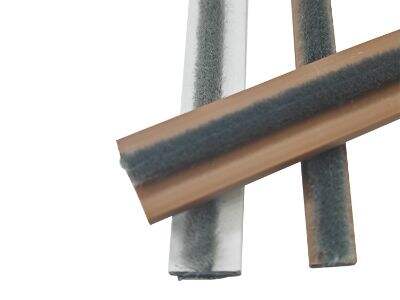Intumescent strips - Stopping walls burning down with extremely critical Intumescent technology and special materials Designed to expand when heated, epoxy intumescent pads are used to fill gaps between a door or window assembly and solid fire-resistive construction. Three main things happen when these lifesaving strips are mixed, allowing them to ensure that the strip contains all of the bits a proper functioning strip should.
Ingredients in Intumescent Strips explained
The qualities of intumescent strips are designed not to attract notice but then snap into action at the first sound in seconds if it ever comes to a fire. Composed of a formulation that is systematically adjusted to react on heating and expand essentially forming an intumescent barrier against the spread of fire. It saves the population by giving them a few more minutes to get out of the building, and it puts some time on their clock (literally) for when we show up as fire fighters.
Main Ingredients Of An Intumescent Strip
How do the intumescent strips work Inside products, as usually the basic substances are three in number a base resin or binder; blowing agent and flame-retardant additives. Each of these parts serves a purpose upon manufacture and contributes to the productivity of the strip in preventing fires.
Exploring The Three Core Material In Intumescent Technology
Exonera-base Resin (Binder): The Binding base of any intumescent strip that is all kinds bonds highly effective growing elements like a polymer polyethylene, epoxy. It is used to give your doors the structure they need, while also having enough flexibility to move alongside them. Resin is heated so it become soft and a commodity supports for rapid curing from other materials.
The blowing agent- this causes the strip to rapidly expand in size. At high temperatures the substances decompose liberation to inert gases - CO2, N 4, C n H m (ethane or paraffin), propane. This gas generation causes the strip to swell and expand, producing a foam insulating barrier that inhibits heat conduction as well as fire progress.
Flame-retardantAdditive: Elemental ingredients like hydrated aluminaor magnesium hydroxide mixed in the strip, CalendarVertexUvs Post Such chemicals, when heat up reacts by absorbing the high and produce water vapor (extinguishing agents) which further cools or wetting the fire area where it is burning.
Intumescent Strips - key components in their manufacture
There are many relations of materials that you have to take care with best intumescent strips. Changing these variables allows us to tune the response time expansion ratio and lifetime of that stretcher strip The use of innovative material science and the development of eco-friendly substitutes provide another option to meet higher sustainability targets, while preserving prior design specifications.
The trio of substrates demystified in high-performance intumescent strips
The balance between a base resin and foam agent, as well as flame-retardant fillers serves high-performance intumescent strips with perfection. Additionally, the polyurethane construction has been upgraded through new resin technology for faster cure times and greater toughness characteristics as well as improved blowing agents which allow controlled expansion making this more environmentally friendly. More potent flame retardant additives to enhance your fire resistance (image from Geom).
Intumescent Strips - Our Closing Thoughts
A highly evolved system comprising base resin, fire retardant material and blowing agent intumescent strips are intended to deliver protection for lives & property in a case of fires. All are equally needed and have a role that helps the strip perfotm its function of reducing fire threats. As research and development continue in the world of intumescent technology, it is highly probably that we will see improved solutions coming to meet modern building safety standards.

 EN
EN
 AR
AR
 BG
BG
 HR
HR
 CS
CS
 DA
DA
 NL
NL
 FI
FI
 FR
FR
 DE
DE
 IT
IT
 KO
KO
 NO
NO
 PT
PT
 RU
RU
 ES
ES
 SV
SV
 ID
ID
 UK
UK
 VI
VI
 GL
GL
 HU
HU
 AF
AF
 MS
MS
 GA
GA
 CY
CY
 BN
BN
 LA
LA
 UZ
UZ

